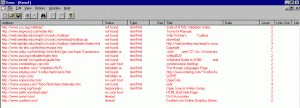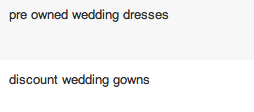Trick #1: Find Out What Page You Should Optimize
Are you wondering what’s the most relevant page on your site for your keyword according to Google? Use this query: [keyword] site:yoursite.com.
![]()
And Google will give you the answer:
![]()
Once you know what page is the most relevant to a specific keyword, you can decide whether you want to optimize that page or create a new one.
Trick #2: Find Out How Much Content You Have for a Specific Keyword
Let’s say you and I are trying to rank for the keyword “dog training.” I only have one page of content and you have 2,000. Who do you think is going to rank better? You, of course. By doing the same search I showed you above you can see who has more content around a given keyword.

Trick #3: Recover the Link Juice from 404 Error Pages
- Check out your Google Webmaster Tools logs and find 404 error pages. These are pages that other websites (or your own website) are linking to but don’t exist on your server.

- Do the same analysis using Xenu Link Sleuth.

- Use OpenSiteExplorer to get a list of all the links pointing to your site. Click on the “Top Pages” tab to get a list of all the pages on your site that get links from external websites. Export that list of pages and use Xenu to check for 404 errors.

- Once you’ve found all the pages that no longer exist, use 301 redirects to send the traffic (and links) from those pages to new pages. For example, let’s say people are linking to you-are-awesme.html (notice that “awesome” is misspelled), but your actual page is you-are-awesome.html. Then what you need to do is redirect traffic from the wrong URL to the right one. Misspellings are not the only cause for getting links to nonexistent pages. Sometimes a page is taken down, sometimes URLs change and sometimes servers don’t work the way they’re supposed to. By using redirects you keep the link juice and your visitors don’t get lost on your site.
Trick #4: Include Images and Videos in Your XML Sitemap File
We all know how important XML sitemaps are to help Google find all the content on our sites. But what a lot of people tend to miss is including images and videos in their XML sitemaps, which is an incredible opportunity to get your multimedia content indexed by Google. This website explains how to create video and image sitemaps.
Trick #5: Fix Keyword-Landing Page Congruency Issues
This is a HUGE problem that most websites have. People find them on Google, visit their websites, check them out and leave them within three seconds. The verdict: they didn’t find what they were looking for. This is how you fix this issue and keep people on your site:
- On Google Analytics, pull a report of all the keywords with more than 5 searches in the last 12 months.

- Sort them by bounce rate. The goal is to find keywords that bring you a lot of traffic but have a really high bounce rate.
- The next step is to figure out what page of your site they found when they searched for each keyword. There are two ways to find out: the quickest but less accurate way is the Google query I mentioned at the beginning of this post: [keyword] site:yoursite.com. The other way is to create an advanced segment using Google Analytics. You’ll create a segment for every keyword, such as “people who found me searching for “black pool tables.” Once that advanced segment is selected, on Google Analytics go to Content > Top Landing Pages.

- Ask yourself this question: “why someone searching for “black pool tables” would leave right after finding this page?” Find ways to make that page more appealing to that audience. Most of the time the answer is obvious, but if it isn’t, use a tool like KissInsights on that page to ask your visitors what they were expecting and they didn’t get.
Trick #6: Choose Your Names Carefully
I’m guilty of not spending enough time thinking about the names for my e-books, tools and blog posts. There are two reasons why names are so important:
- Great names attract more attention, which result in more traffic, links and better organic rankings.
- When you choose a keyword-rich name, people will use it to link to you. And, as you know, when your keywords are in the anchor text of the links pointing to you, it helps you rank better for that keyword. Let me give you an example. Let’s say I create a tool to check your organic rankings. I could call it “Zeke’s Ranking Tool,” but nobody is searching for that. Instead, I should call it “SEO Ranking Tool.” That way, when people link to it they’ll use “SEO Ranking Tool” in the link text, which will help me rank better for that keyword.
Trick #7: Find Out What Keywords Your Competitors Are Using for Their SEO Campaigns
I’m shocked at how very few people check their competitors keywords when they do keyword research. These are my favorite ways to spy on my competitors’ keywords:
- Run SEMRush on their sites.

- Check their page titles and meta descriptions (site:yourcompetitor.com)
- Check their meta keywords for their top 20 pages on Google.
- Use OpenSiteExplorer to check their anchor text distribution. If they’re actively doing SEO, looking at the link text for their inbound links is the best way to see what keywords they’re focusing on.

Did you find these tips useful? What else would you like to know about SEO? Comment below or click here to learn more about our professional SEO services.

